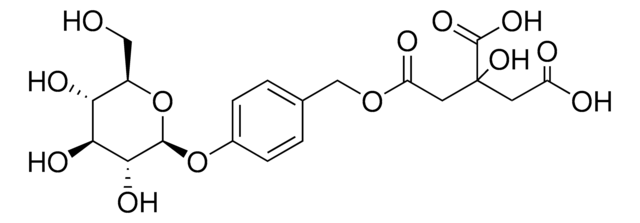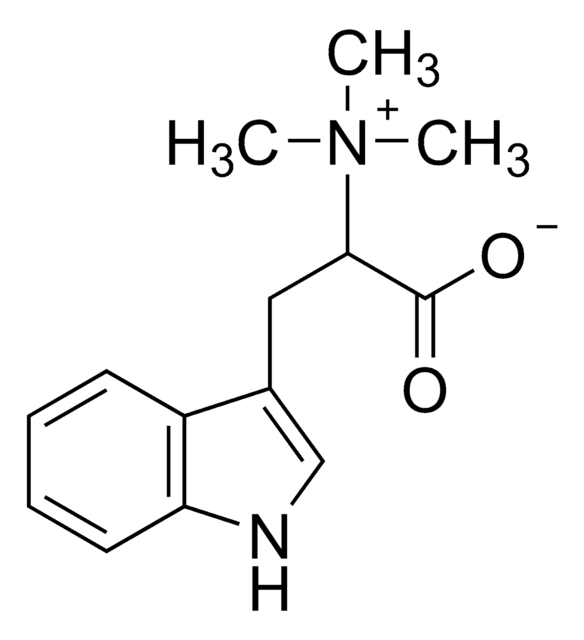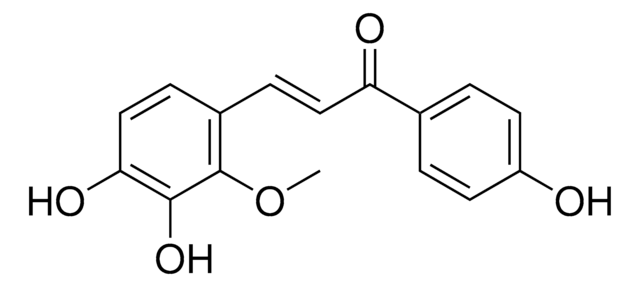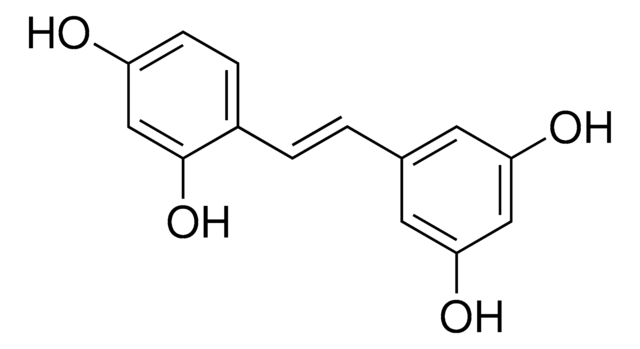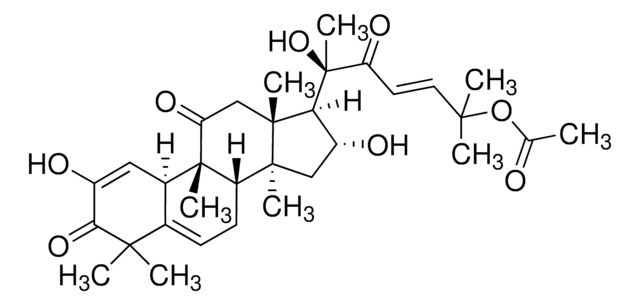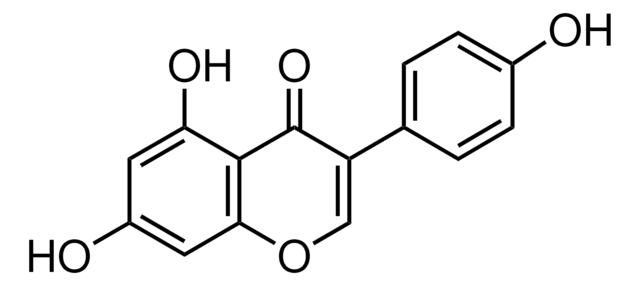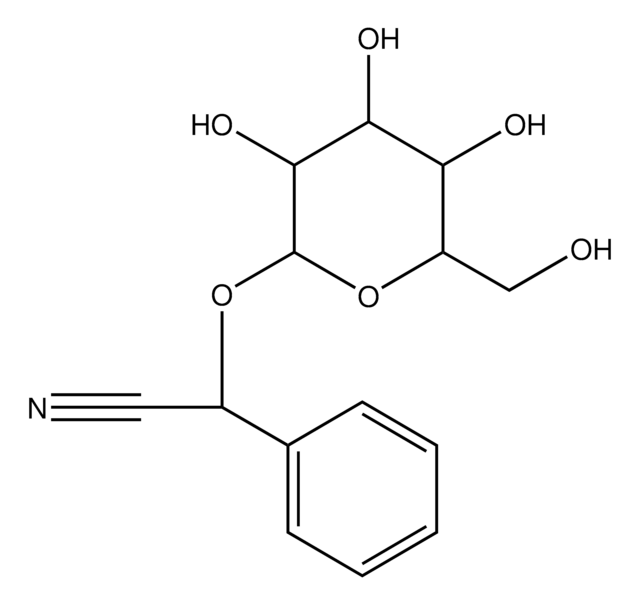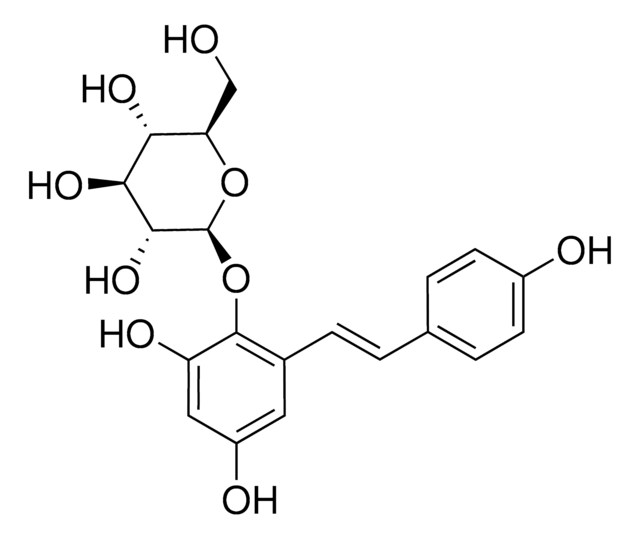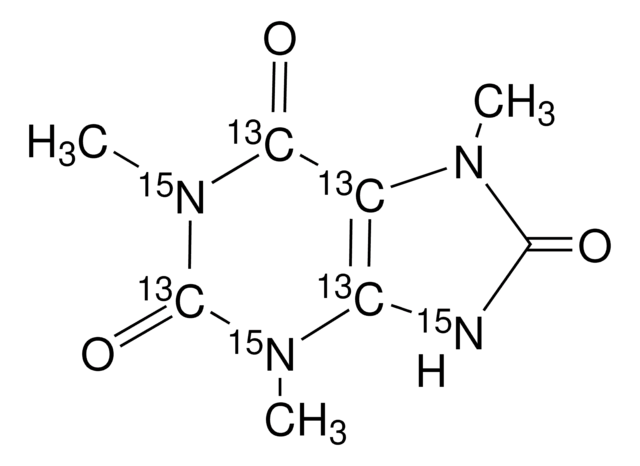SMB01068
Licoricidin
≥90% (LC/MS-ELSD)
Synonyme(s) :
(+)-Licoricidin, 7-O-Demethyllicorisoflavan A, Licorisoflavan B
About This Item
Produits recommandés
Source biologique
plant
Essai
≥90% (LC/MS-ELSD)
Forme
solid
Poids mol.
424.53
Application(s)
metabolomics
vitamins, nutraceuticals, and natural products
Température de stockage
−20°C
Chaîne SMILES
O1C[C@H](Cc3c1cc(c(c3OC)CC=C(C)C)O)c2c(c(c(cc2)O)CC=C(C)C)O
InChI
1S/C26H32O5/c1-15(2)6-8-19-22(27)11-10-18(25(19)29)17-12-21-24(31-14-17)13-23(28)20(26(21)30-5)9-7-16(3)4/h6-7,10-11,13,17,27-29H,8-9,12,14H2,1-5H3/t17-/m0/s1
Clé InChI
GBRZTUJCDFSIHM-KRWDZBQOSA-N
Description générale
Application
Actions biochimiques/physiologiques
Caractéristiques et avantages
- Suitable for Biochemical and Biomedical research
- Versatile and adaptable for wide variety of laboratory and research applications
Autres remarques
Code de la classe de stockage
11 - Combustible Solids
Classe de danger pour l'eau (WGK)
WGK 3
Point d'éclair (°F)
Not applicable
Point d'éclair (°C)
Not applicable
Faites votre choix parmi les versions les plus récentes :
Certificats d'analyse (COA)
It looks like we've run into a problem, but you can still download Certificates of Analysis from our Documents section.
Si vous avez besoin d'assistance, veuillez contacter Service Clients
Déjà en possession de ce produit ?
Retrouvez la documentation relative aux produits que vous avez récemment achetés dans la Bibliothèque de documents.
Notre équipe de scientifiques dispose d'une expérience dans tous les secteurs de la recherche, notamment en sciences de la vie, science des matériaux, synthèse chimique, chromatographie, analyse et dans de nombreux autres domaines..
Contacter notre Service technique